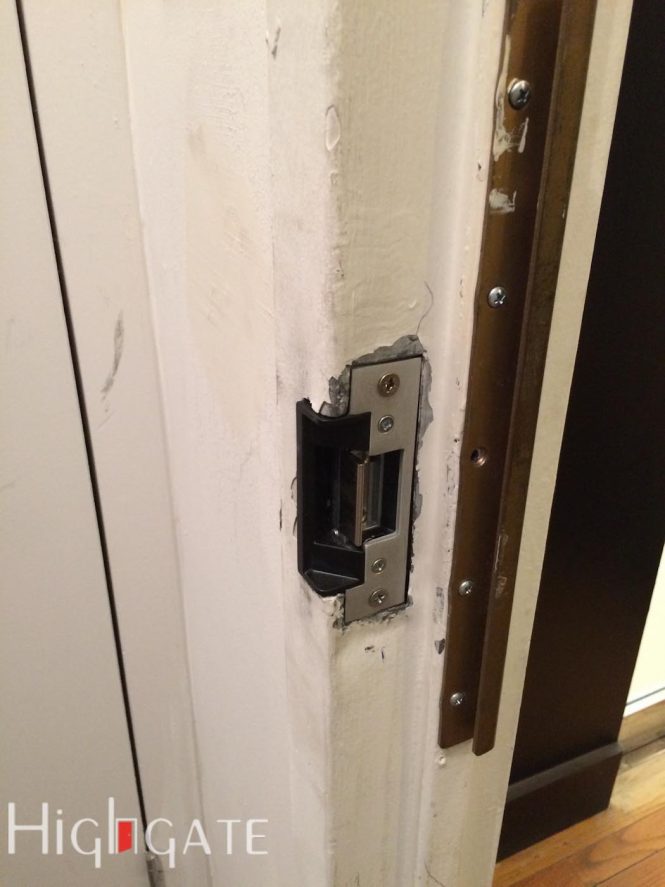

Door frame problems can significantly impact the functionality and aesthetics of your home. Whether you’re experiencing sagging frames, crooked doors, or gaps around your entryway, resolving these issues is vital for a secure and attractive home. This guide dives deep into the world of door frame problems, providing comprehensive solutions for each common issue you might encounter. We’ll walk you through the causes, provide practical troubleshooting tips, and discuss expert advice for fixing these issues yourself or hiring a professional. We will discuss common scenarios such as settling, warping, and misalignment, and provide solutions using both DIY and professional approaches. By the end of this article, you’ll have the knowledge and confidence to tackle any door frame problem with ease.
Identifying Door Frame Problems
Common Signs of Trouble
Door frame problems are often subtle but can manifest in several ways. Sagging or warping frames, crooked doors, gaps around the door, and squeaking noises are all possible indicators that something is amiss. A thorough visual inspection is the first step in diagnosing the issue, paying close attention to the frame’s alignment, any noticeable movement, and the condition of the surrounding materials. In addition, checking for gaps and cracks in the frame and surrounding surfaces is essential. These initial steps will help you pinpoint the specific problem areas.
Causes of Door Frame Problems
Environmental Factors
Several environmental factors can contribute to door frame problems. Changes in temperature and humidity can cause wood to expand and contract, leading to warping, cracking, or sagging. Moisture from leaks or excessive humidity can also affect the frame’s structural integrity, leading to rot and decay. Similarly, ground movement can cause settling, which impacts the door’s alignment.
DIY Solutions for Common Problems
Adjusting and Repairing
Addressing minor door frame problems often involves simple adjustments or repairs. If the door is simply misaligned, you might need to adjust the hinges or use shims to correct the gap. Small cracks or gaps can sometimes be filled with wood filler or caulk. For minor settling issues, you may consider shimming or adjusting the frame, especially in the areas with noticeable gaps or movement.
When to Call a Professional
Structural Issues
Significant structural problems, such as extensive warping, bowing, or severe settling, likely require the expertise of a professional contractor. If you observe significant damage or instability, it’s best to engage a professional door repair specialist, especially if the door frame’s structural integrity seems compromised. This ensures that the repair will be safe and effective and that the door’s functionality and appearance are restored properly.
Preventative Measures for Lasting Solutions
Regular Maintenance
Proactive maintenance can significantly reduce the likelihood of future door frame problems. Regular inspections and maintenance can often identify minor issues before they escalate into larger, more costly repairs. Ensuring proper ventilation in the area to control moisture levels can be a significant preventative step. Furthermore, sealing any potential sources of water intrusion can protect the structural integrity.
Understanding Door Frame Installation
Proper Installation Techniques
Understanding proper installation techniques is crucial in ensuring your door frame lasts for years to come. Door frame installation typically involves careful measurements, accurate leveling, and secure fastening of all components. Using appropriate materials and following the manufacturer’s instructions are also key in preventing future problems.
Selecting the Right Materials
Choosing Durable Materials
Selecting the right materials for your door frame is critical for its long-term performance and appearance. Consider factors like weather resistance, moisture tolerance, and structural integrity when choosing between wood, metal, or composite materials for your door frame.
Additional Tips for Door Frame Maintenance
Professional Cleaning
Sometimes, it’s about more than just structural integrity. For optimal aesthetics and lasting protection, professional cleaning for your door frame might be necessary. Consider consulting professional door frame cleaners.
Additional Considerations When Installing
Factors like Building Code
Building codes often dictate minimum standards for door frame installation and maintenance, impacting its durability. Consulting these codes may be relevant to your specific case, providing critical guidelines to the installation process.
Frequently Asked Questions
Q1: What are the main signs that my door frame needs repair?
A1: Door frame repair is often needed when you observe signs like warping, sagging, or misalignment of the door and frame. Gaps appearing around the door, and squeaking noises are other important indicators. A thorough visual inspection is the first step in diagnosing the issue, paying close attention to the frame’s alignment, any noticeable movement, and the condition of the surrounding materials.
Q2: Can I fix minor door frame problems myself, or do I always need a professional?
A2: Minor adjustments, like shimming or adjusting hinges, can often be tackled by homeowners. However, for significant problems like structural damage or extensive warping, it’s best to consult a professional contractor. Assess the scope of the damage carefully before attempting DIY repairs. If you’re unsure about any part of the process, it’s best to contact a qualified professional to avoid further issues.
In conclusion, addressing door frame problems requires a systematic approach. Understanding the root cause, selecting the right repair method, and preventative measures are crucial. By following the advice outlined in this article, homeowners can maintain the structural integrity and aesthetic appeal of their doors and frames for years to come. If you’re still unsure about any step, consider contacting a professional door repair service for expert assistance. They can provide specialized tools and knowledge for tackling complex or challenging repairs.